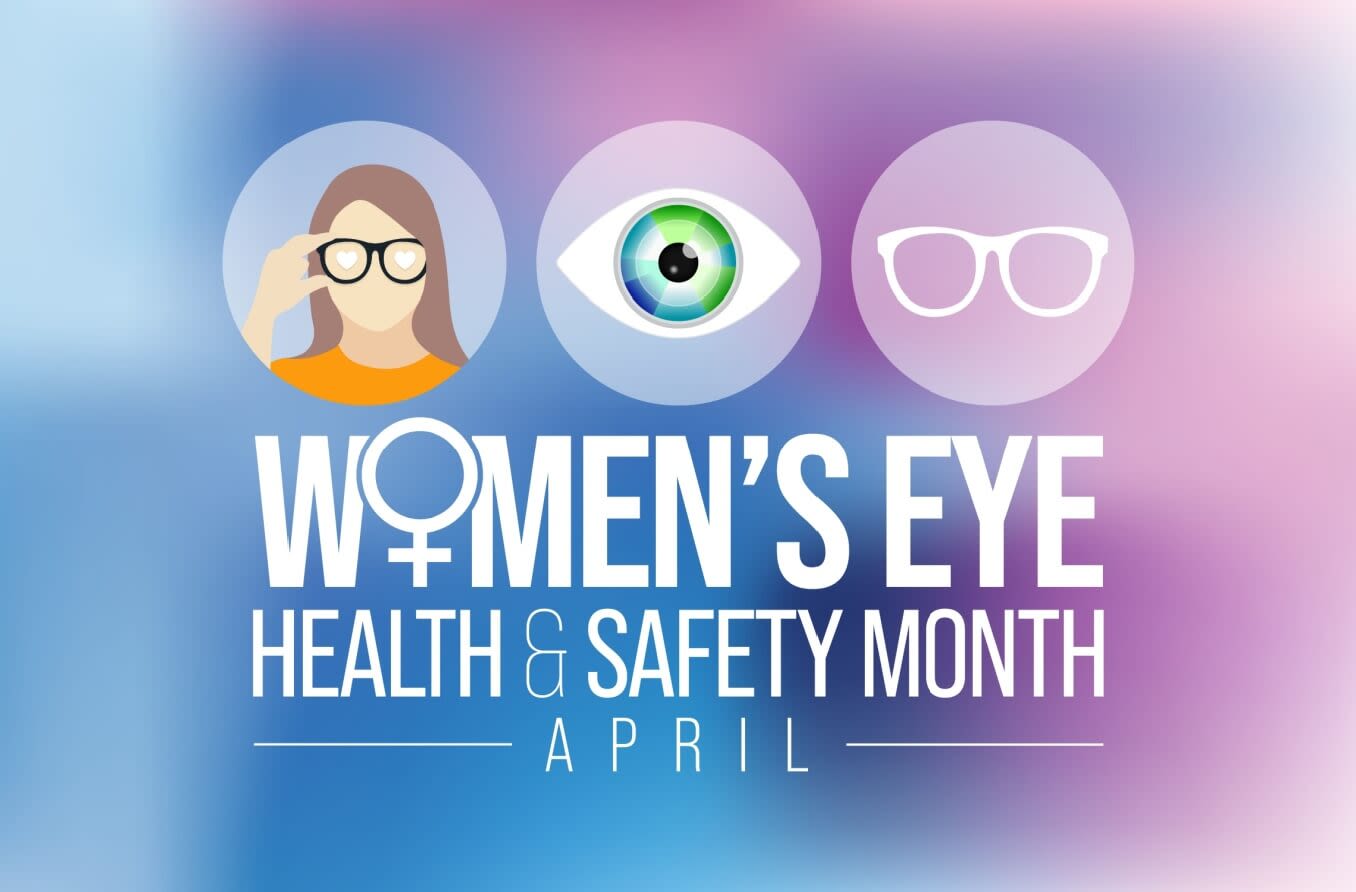Bringing awareness to women's eye health and safety

History of Women's Eye Health and Safety Month
Vision impacts all aspects of life. Women have a higher risk of eye health and vision problems that can affect their quality of life, such as glaucoma and age-related macular degeneration, than men.
Many eye diseases and conditions can be treated and possibly prevented if detected early. An eye doctor can also diagnose other health problems like high blood pressure and diabetes during a comprehensive eye exam. However, women often put themselves last when it comes to health care.
Prevent Blindness, a volunteer eye health and safety organization dedicated to fighting blindness and saving sight, has declared April as Women’s Eye Health and Safety Month. This observance is designed to raise awareness about women’s eye health, the importance of regular eye exams, and what can be done to help prevent vision loss.
Why women's eye health matters
Two-thirds of people with vision issues and blindness in the U.S. are women. The good news is that nearly 80% of visual impairment in the U.S. and 25% of blindness can be treated or prevented.
One of the main reasons women have more vision problems than men is because they typically live longer. Many vision issues occur with age.
Hormone fluctuations are another reason why women are more likely than men to develop vision issues. Hormone changes can occur during:
Pregnancy – Fluid retention caused by hormone changes can lead to blurry vision during pregnancy. This and other pregnancy-related vision changes usually disappear after a woman gives birth.
Menopause – Women also experience significant hormonal changes during menopause. Dry eye is common among peri- and postmenopausal women.
Common eye conditions affecting women
Most eye health problems and vision issues affect both men and women equally. However, women are at a higher risk for developing some eye issues, including:
Dry eye syndrome – About 3.2 million women in the U.S. have dry eye syndrome. Symptoms include itching, burning, irritation, blurry vision and sensitivity to light. Dry eye syndrome can damage the front of the eye and lead to vision impairment.
Age-related macular degeneration (AMD) – AMD is an eye condition that causes the loss of central vision. It’s the most common cause of vision loss in people age 50 and older.
Autoimmune diseases – Some autoimmune diseases can affect the eyes and cause eye problems, including lupus, thyroid eye disease, rheumatoid arthritis and multiple sclerosis (MS).
Cataracts – This clouding of the eye’s natural lens can cause hazy or blurry vision.
Glaucoma – Glaucoma is a disease that damages the optic nerve in the back of your eye. It’s often called “the silent thief of sight” because there are no symptoms in its early stages.
Low vision – Low vision is a vision impairment that can’t be completely corrected with glasses, surgery or medical treatments.
Eye health tips for women
Making your eye health a priority is the best way to protect your vision. Here are some habits that can help maintain your eye health and lower your risk of eye disease:
Get routine comprehensive eye exams – Women ages 18 to 64 should have an eye exam at least every two years. If you’re 65 and older, you should have an eye exam annually. Your eye doctor will tell you if need to be seen more often.
Eat a healthy diet – Eat foods that are good for eye health, such as fish, lean meats, whole grains, brightly colored fruits and dark leafy greens.
Stay active – Exercise is a good way to keep your eyes healthy because it reduces your risk of diabetes and other health problems that can affect vision.
Wear sunglasses – The sun emits ultraviolet (UV) rays that can damage your eyes even on cloudy days so wear sunglasses whenever you’re outside. Make sure your sunglasses block 99% to 100% of UVA and UVB rays.
Use protective eyewear when needed – Protective eyewear like safety glasses and goggles can help keep your eyes safe from potential dangers. They’re good to wear when you play sports or work with hazardous materials, among other situations.
Quit smoking – Smoking can damage your eyes and raise your risk for eye health problems such as age-related macular degeneration and cataracts.
Women often juggle many responsibilities, including work and caretaking, along with many other activities. Getting regular eye exams can help ensure your eyes are healthy and that you can see clearly. The investment in your health can pay off today and in the future.
SEE RELATED: National Eyewear Day
Women's eye health and safety. Prevent Blindness. April 2022.
As women are at higher risk for eye disease, Prevent Blindness declares April as Women’s Eye Health and Safety Month. Prevent Blindness. March 2021.
Vision impairment has implications for aging and health outcomes, beyond ophthalmology. JAMA Network Open. May 2022.
Women and eye disease. Prevent Blindness. Accessed March 2024.
Blurry vision while pregnant. Cleveland Clinic. May 2022.
Prevent Blindness designates April as Women’s Eye Health and Safety Month to educate public on a variety of women’s vision issues. Prevent Blindness. March 2023.
Dry eye. National Eye Institute. November 2023.
What is macular degeneration? EyeSmart. American Academy of Ophthalmology. November 2023.
What are cataracts? American Academy of Ophthalmology. October 2023.
At a glance: Glaucoma. National Eye Institute. November 2023.
What is low vision? American Academy of Ophthalmology. April 2023.
Comprehensive eye exams. American Optometric Association. Accessed March 2024.
Women and eye health. National Eye Institute. Accessed March 2024.
How smoking can contribute to vision loss and blindness. U.S. Food and Drug Administration. Accessed March 2024.
Page published on Thursday, March 21, 2024
Page updated on Tuesday, March 26, 2024






